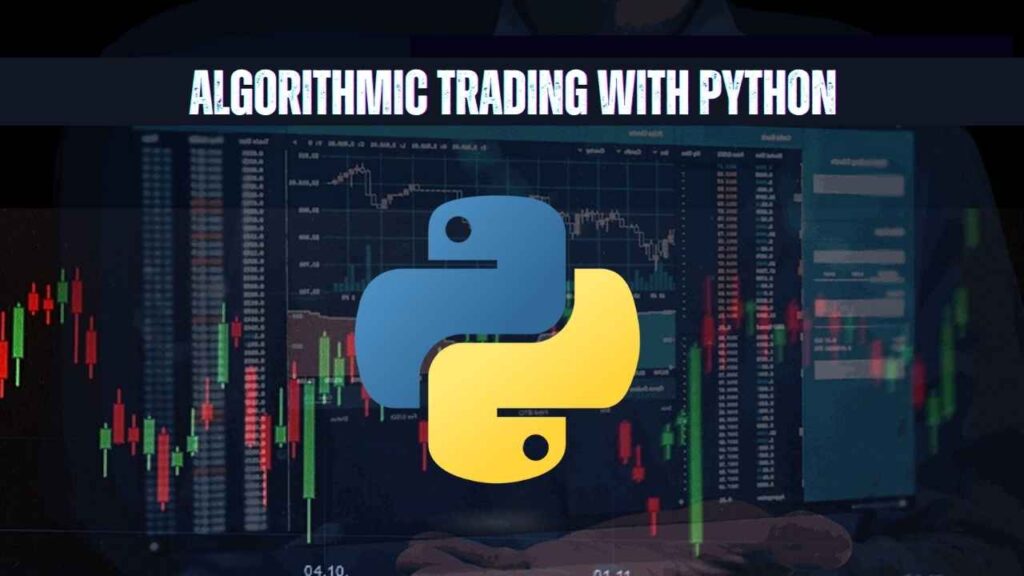In the fast-paced financial markets of today, ever more traders are making use of algorithmic trading—allowing programs to make automatic buys and sells of stocks, futures, and other securities. With simple-to-use coding software, rapid internet connectivity, and broker APIs, even novices can create straightforward trading “bots” and let them do the effort for you.

What Is Algorithmic Trading?
Algorithmic trading (or “algo trading”) uses computer programs to place trades when certain rules are met. For example:
- Moving-average crossover: Buy when a stock’s 10-day average price moves above its 50-day average.
- Price target: Sell when a commodity reaches ₹75,000 per unit.
Instead of clicking “buy” and “sell” yourself, your program watches the market 24/7 and trades automatically when your conditions are met. This helps you avoid slow reaction times, emotional decisions, and the challenge of watching many charts at once.
Why Use Python for Algo Trading?
Python has become the top choice—especially for retail traders and quantitative analysts—because:
- Easy to Learn & Read
- Simple, clear code that non-programmers can pick up.
- Powerful Libraries
- Pandas and NumPy for handling data.
- TA-LIB for technical indicators.
- scikit-learn, XGBoost, TensorFlow for machine learning.
- Backtesting Tools
- Backtrader, Zipline, QuantConnect let you test strategies on past data.
- API Support
- Many Indian brokers (such as Groww) offer Python APIs for live trading.
- Community Help
- Thousands of tutorials, GitHub projects, and forum posts to guide you.
Getting Started: Six Simple Steps
- Set Up Your Coding Environment
- Install Python 3.8+ from python.org.
- Choose an editor: Jupyter Notebook for exploration, or VS Code/PyCharm for development.
- Install packages:
pip install pandas numpy matplotlib ta-lib backtrader yfinance - Or use Google Colab if you don’t want a local setup.
- Learn Basic Market Concepts
- Understand order types: market, limit, stop-loss.
- Know the asset classes on NSE and BSE (equities, futures, options).
- Study SEBI’s 2025 rules on automated trading approvals.
- Code a Simple Strategy
- Example: 50-day vs. 200-day moving-average crossover.
- Fetch historical data with yfinance or broker API.
- Use pandas to calculate averages and print buy/sell signals.
- Backtest Your Strategy
- Run your code on past data with Backtrader or Zipline.
- Look at returns, maximum drawdown, Sharpe ratio, and win-loss ratio.
- Include transaction costs and slippage for realistic results.
- Connect to a Broker API
- Open a trading account and get API keys.
- Write code to authenticate and place orders securely.
- Add error handling (retry logic, connection checks).
- Manage Risk
- Set stop-loss limits and daily loss caps in your code.
- Monitor your live trades with a simple dashboard or logs.
- Follow SEBI compliance: tag your algo, route orders through approved platforms.
Advanced Topics to Explore
- Machine Learning
- Use models like regression, decision trees, or neural networks to spot trading signals.
- Libraries: scikit-learn, TensorFlow, Keras.
- High-Frequency Trading (HFT)
- Executes hundreds of trades in milliseconds.
- Generally used by institutions—with co-location services and ultra-low latency links.
- Sentiment Analysis
- Analyze news, social media, and official announcements for market mood.
- Tools: NLTK, spaCy, transformers.
- Combine sentiment scores with price indicators.
Top Resources to Learn
- Online Courses: Look for Python-for-trading programs on Coursera and Udemy.
- Books:
- Python for Algorithmic Trading by Yves Hilpisch
- Algorithmic Trading by Ernest Chan
- YouTube: Channels like “Trading With Groww” offer step-by-step tutorials.
The Future Is Automated
Algorithmic trading has made it possible for individual traders to compete with institutional firms. With Python’s welcoming syntax and rich ecosystem, creating, testing, and executing your own trading algorithms is easier than ever. But don’t forget: more than code is required to succeed. You’ll need sound market knowledge, rigorous risk management, and regulatory compliance.
Whether you’re just curious or ready to go live, start small, learn continuously, and backtest thoroughly. The world of algorithmic trading is waiting—and your Python skills are the key.
Disclaimer: This article is for educational purposes only and does not constitute financial advice.











